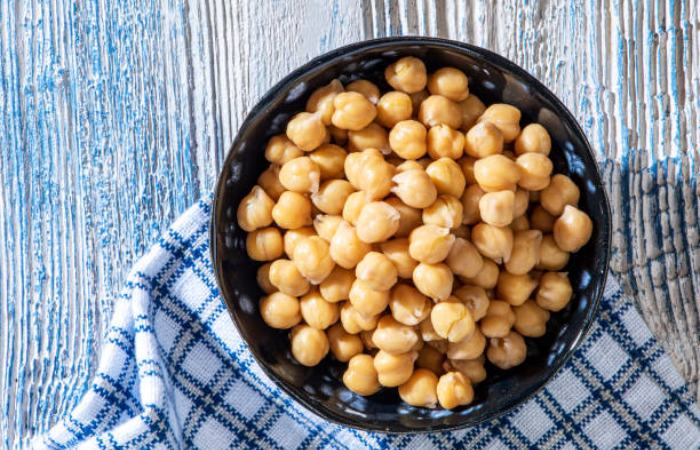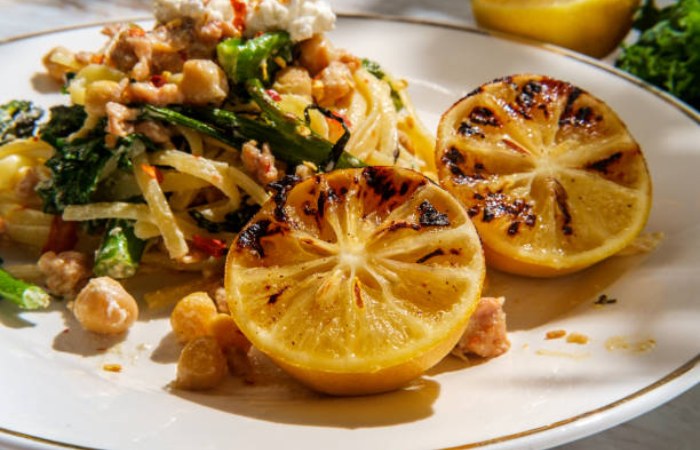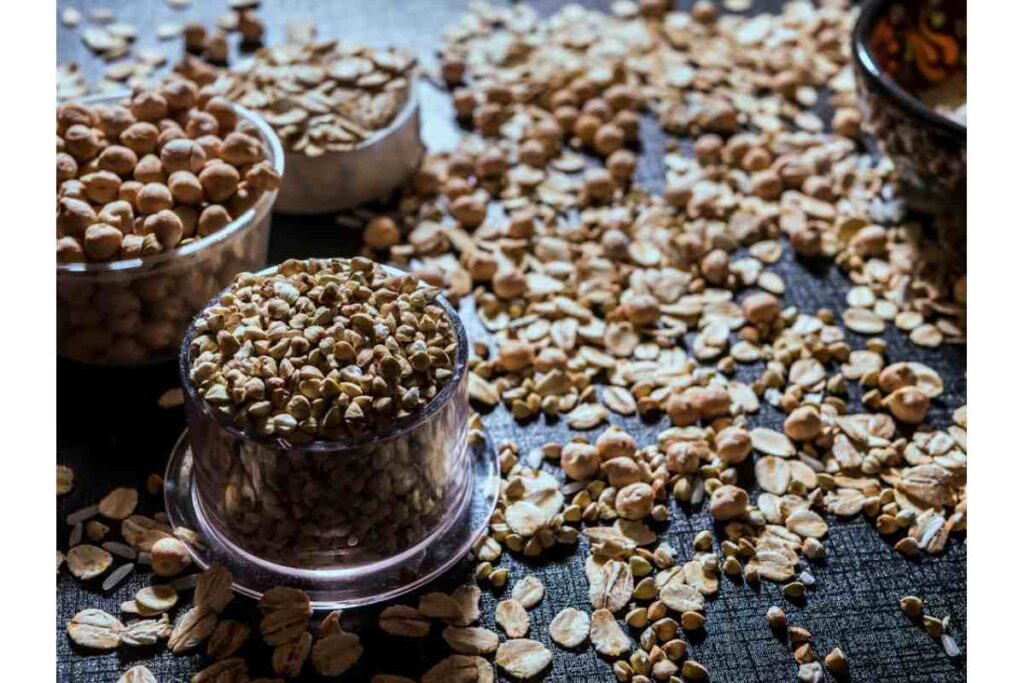If you’ve ever added crudites to a creamy bowl of garlicky hummus or topped a salad with crispy roasted chickpeas, you’ve discovered the power of chickpeas.
But even if you’re new to legumes, chickpeas can be an easy, nutritious addition to your diet.
What are Chickpeas?

Chickpeas, a member of the Fabaceae (or pea) family, is the edible fruit of the Cicer arietinum plant. Small, round, and typically beige, chickpeas are a rich source of vitamins, minerals, plant-based proteins, and fibre.
Are chickpeas healthy?
Chickpeas contain 14.5 grams of plant-based protein per cup (cooked), making them a good option for people who want more protein without eating more meat. They also contain 12.5 grams of fibre per cup, which aids digestion, helps maintain a healthy gut microbiome, and can help you feel fuller longer after eating. Plus, they’re relatively low in calories and contain 4 grams of fat (a mix of healthy monounsaturated and polyunsaturated fats) per cup. And because they have a low glycemic index, unlike refined carbohydrates, eating them won’t cause your blood sugar to spike.
Chickpeas comprise a variety of vitamins and minerals. They’re a great source of manganese (necessary for the brain and nervous system), folate, vitamin B (important for cell growth), and copper, iron, zinc, and phosphorus. Chickpeas are ironic in vitamins A, E, and C and are a good source of thiamin, vitamin B6, and selenium. They’re also a good source of potassium and Mg, which help maintain cardiovascular health by preventing high blood pressure. Chickpeas are cholesterol-free, low in sodium, and rich in heart-healthy polyunsaturated fats.
Ideas for Adding Chickpeas to Your Diet
You can like chickpeas straight from the can (rinse them first to remove excess sodium), toss them in salads, or add them to gumbos and stews, where they can replace some or all of the meat called for in many recipes. Dip veggies in hummus, a dip made from chickpeas, garlic, lemon fluid, olive oil, and tahini (a sesame seed paste). When enjoying hummus, pay attention to portion sizes, as the calories from olive oil and tahini can add up, and check the sodium levels of store-bought hummus. You can also replace the chicken or lamb in a gyro with falafel (made from chickpeas, herbs, and spices).
If you prefer home cooking, buying dried chickpeas and cooking them at home is easier (and cheaper). Ensure you have a little time. Many popular cooking methods call for soaking dried beans in water overnight before cooking. (Or make them ahead and store them in the freezer for a quick, healthy source of protein you can turn to at any time.)
You can also try chickpea flour, a good substitute for flours that contain gluten. Chickpea flour is a little denser than all-purpose flour and absorbs more moisture, so it’s not a 1:1 replacement for all-purpose flour, but there are plenty of recipes online to help you make the switch. Or buy pasta made with chickpea flour instead of white or whole wheat flour; it tends to have more protein and fibre than traditional pasta and has a pleasant nutty flavour.
Easy Chickpea Recipes

The following recipes will work with canned or dried chickpeas you’ve cooked yourself.
Toss chickpeas with a lemon wedge, a drizzle of extra-virgin olive oil, and a tweak of flaky salt. Add them to a salad or eat them plain.
Toss chickpeas with cucumber, tomato, red onion, feta cheese, olives, lettuce, and Greek dressing.
Make roasted chickpeas by patting them dry, then tossing them with extra-virgin olive oil, salt, pepper, and your favourite spices. Spread them in a single layer on a boiling sheet and roast them at 350° for about 45 minutes. Eat them as a snack or use them to garnish a salad.
For the creamiest homemade hummus, boil a can of it with a pinch of baking soda for about 20 minutes. Then combine the chickpeas with 1/2 cup tahini, the juice of two small lemons, a large clove of garlic, a significant tweak of salt, and a drizzle of lime oil to make hummus. You may need to add up to 4 tablespoons of water to achieve the desired consistency. Drizzle with olive lard and sprinkle with herbs or spices of your choice.
Make the curried chickpeas by heating canola oil in a heavy-bottomed saucepan, then adding chopped onion, minced garlic and crushed red pepper. Cook until the onion is golden brunette (about 10 minutes). Add curry dust and cumin and cook until fragrant. Then, add a can of crushed tomatoes. Enhance one can of coconut milk and two cans of chickpeas in the pan, reduce heat, and simmer for 10 minutes. Serve with brown rice. Combine a large bunch of cilantro, equal parts fresh lime juice and olive oil (about 1/4 cup each), a large clove of garlic, 2 teaspoons mustard, 2 teaspoons sugar, and a pinch of salt and pepper. Toss the dressing with 1 cup chopped red onion and 3 cups cooked and cooled chickpeas.


